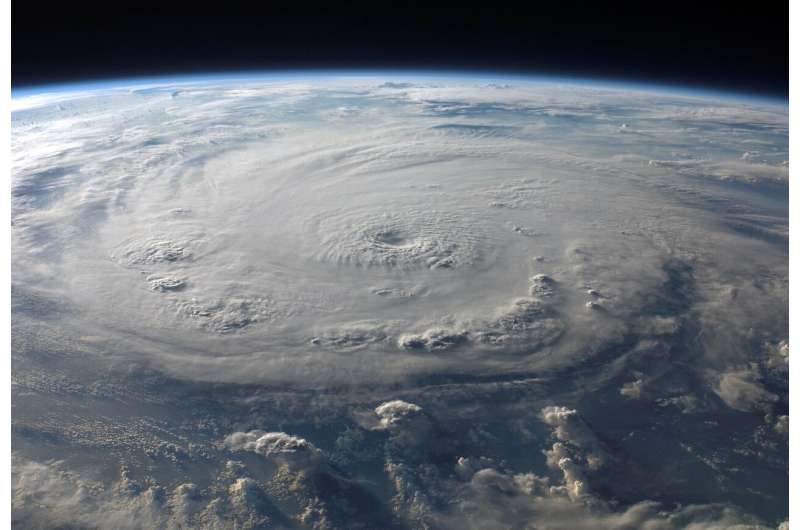Predicting a hurricane's intensity can prove difficult

Rapid intensification is a serious challenge for the prediction of hurricane intensity. An example is Hurricane Maria in 2017, which intensified to a Category 5 storm within 24 hours and destroyed Puerto Rico. None of the computer models were able to predict it. A more recent example is Hurricane Dorian, which was predicted to become just a tropical storm, before it rapidly intensified into a Category 5 storm and caused extensive damage in the Bahamas.
An Index to Better Estimate Tropical Cyclone Intensity Change in the Western North Pacific, published in the September 2019 issue of American Geophysical Union's journal Geophysical Research Letters, includes a new operational algorithm that improves prediction of the rapid intensification that may occur in tropical cyclones within 24 hours. The paper is a collaborative effort between researchers from the United States and the Republic of Korea.
"The objective of this study is to improve intensity prediction, especially in a short temporal range of 24 hours," said Woojeong Lee, Ph.D., from the National Typhoon Center, Jeju, the Republic of Korea, who is the first author of this paper. "We developed a synoptic predictor for intensity change based on the microphysics study of the air-sea interface in hurricane conditions conducted by U.S. scientists from Nova Southeastern University (NSU), the University of Miami, the University of Hawaii, and the University of Rhode Island."
While track prediction of tropical cyclones (TCs) has improved steadily over the last three decades, there has been comparatively little advancement in intensity prediction due to the complicated physical mechanisms involved in internal TC dynamics and their interaction with upper ocean and atmospheric circulation. This new index is expected to contribute to improvements in real-time intensity forecasts, not only for the western North Pacific but also for other basins including Florida, the North Atlantic and the Gulf of Mexico.
Alexander Soloviev, Ph.D., a professor and research scientist at NSU's Halmos College of Natural Sciences and Oceanography who co-authored the paper, said the new algorithm may be a game changer in the field of hurricane intensity prediction.
"We have taken into account the phenomenon of the 'slippery sea surface' under certain hurricane conditions, which is conducive to rapid storm intensification," he said.
These results were previously published in the Nature Scientific Reports and the Journal of Geophysical Research and implemented in the new operational index for rapid intensification, which reduced the error of tropical cyclone prediction within 24 hour period by 16%.
More information: Woojeong Lee et al. An Index to Better Estimate Tropical Cyclone Intensity Change in the Western North Pacific, Geophysical Research Letters (2019). DOI: 10.1029/2019GL083273
Alexander V. Soloviev et al. The air-sea interface and surface stress under tropical cyclones, Scientific Reports (2014). DOI: 10.1038/srep05306
Alexander V. Soloviev et al. Is the State of the Air-Sea Interface a Factor in Rapid Intensification and Rapid Decline of Tropical Cyclones?, Journal of Geophysical Research: Oceans (2017). DOI: 10.1002/2017JC013435
Woojeong Lee et al. An Index to Better Estimate Tropical Cyclone Intensity Change in the Western North Pacific, Geophysical Research Letters (2019). DOI: 10.1029/2019GL083273
Journal information: Geophysical Research Letters , Journal of Geophysical Research , Scientific Reports
Provided by Nova Southeastern University




















